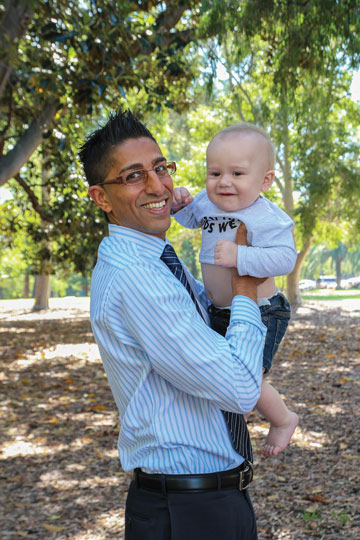Search
Showing results for "rishi kotecha"

News & Events
Drug find could represent big win for our little patientsDr Rishi Kotecha knows too well the devastation of a leukaemia diagnosis in a child, treating children as a consultant at Princess Margaret Hospital.
Research
High Expression of NTRK1 in ETV6::RUNX1 Positive Acute Lymphoblastic Leukaemia Drives Factor Independence and Sensitivity to LarotrectinibETV6::RUNX1 is one of the most common recurrent genomic abnormalities in acute lymphoblastic leukaemia (ALL) and is associated with a good prognosis. High expression of NTRK1, encoding tropomyosin receptor kinase A (TrkA), confers a poor prognosis in other malignancies and may contribute to therapy resistance in patients with ETV6::RUNX1 B-ALL.
Research
Imaging of Abdominal Complications in Children With Acute Lymphoblastic LeukaemiaAcute lymphoblastic leukaemia (ALL) is the most common paediatric malignancy and remains one of the most common causes of cancer-related death in children and adolescents. Five-year overall survival rates now exceed 90% with current multidrug chemotherapeutic regimens.
Research
The Bone Marrow Microenvironment in B-Cell Development and MalignancyB lymphopoiesis is characterized by progressive loss of multipotent potential in hematopoi-etic stem cells, followed by commitment to differentiate into B cells, which mediate the humoral response of the adaptive immune system.
Research
Methotrexate-related central neurotoxicity: clinical characteristics, risk factors and genome-wide association study in children treated for acute lymphoblastic leukemiaSymptomatic methotrexate-related central neurotoxicity (MTX neurotoxicity) is a severe toxicity experienced during acute lymphoblastic leukemia (ALL) therapy with potential long-term neurologic complications. Risk factors and long-term outcomes require further study.
Research
Challenges posed by COVID-19 to children with cancerDevelopment of standardised guidance by national and regional authorities for reducing the risk of SARS-CoV-2 transmission to children with cancer
Research
A Novel Missense Mutation Affecting the N-terminal Domain of SAP Protein in X-linked Lymphoproliferative DiseaseWe have revealed a novel SH2D1A gene mutation in a patient with XLP resulting in fulminant refractory EBV-driven HLH, which is a recognized severe complication
Research
Childhood craniopharyngioma: 20-year institutional experience in Western AustraliaAlthough neurocognitive, psychological and behavioural problems were noted for some patients during medical review, only 20% of patients were formally assessed.
Research
Optimized peripheral blood progenitor cell mobilization for autologous hematopoietic cell transplantation in children with high-risk and refractory malignanciesOur approach to hematopoietic progenitor cells mobilization resulted in highly effective HPC harvest in children and adolescents with high-risk cancers
Research
New therapeutic opportunities from dissecting the pre-B leukemia bone marrow microenvironmentWe provide evidence that targeting leukemia-induced bone loss is a therapeutic strategy for pre-B ALL
